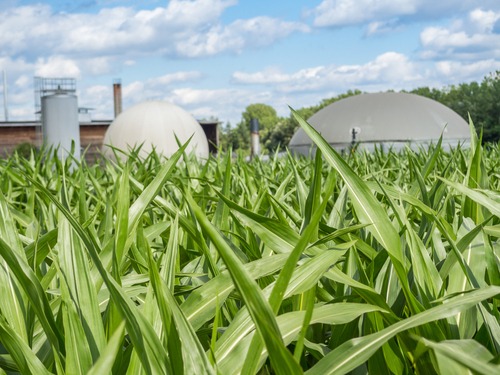SoCalGas to replace 12.2 percent of gas with renewable offerings by 2030 under new renewable gas standard

The California Public Utilities Commission (CPUC) laid out the first renewable gas standard in the United States last week, marking a major change for California and the gas distribution utility giant SoCalGas, which will need to replace a significant chunk of its product with renewable gas by 2030.
Despite the new demand – a 12.2 percent swap of its traditional gas for renewable gas – SoCalGas applauded the decision for its efforts to significantly decarbonize California’s gas system.
“This new standard will be critical to California’s transition to net zero by implementing a framework to recycle waste, eliminate greenhouse gas emissions produced by that waste, and put it to good use as renewable natural gas,” Jawaad Malik, SoCalGas vice president of strategy and sustainability and chief environmental officer, said. “Our way forward will require the innovative implementation of clean fuels such as renewable natural gas and hydrogen to help make our transition to a cleaner future reliable, resilient, and affordable. By creating a new mechanism for consumers to access renewable natural gas, we are one step closer to a cleaner future.”
Under the standard, SoCalGas will also, in the interim, have to procure approximately 3 percent renewable gas by 2025. Last year, the company set a goal to achieve net zero greenhouse emissions in operations and energy delivery by 2045, and delivering 20 percent renewable natural gas by 2030. In this way, the company noted that California’s new RNG standard aligns well with its existing plans.
CPUC developed its new standard and renewable gas procurement goals following the passage of SB 1440. In addition to these goals, CPUC’s new standard seeks to reduce emissions by reducing organic waste in landfills. Under California law, by 2030, methane emissions must be reduced by 40 percent, hydrofluorocarbon gas emissions by 40 percent, and anthropogenic black carbon emissions by 50 percent. Each of these figures is comparative to 2013 emissions levels.
“The CPUC’s decision today will help California to address the single most urgent climate issue, which is the reduction of climate super pollutants methane and black carbon,” Julia Levin, Executive Director of the Bioenergy Association of California and former Deputy Secretary for Climate Change and Energy at the California Natural Resources Agency, said. “Requiring utilities to procure biomethane generated from organic waste will help to reduce landfill waste, open burning of agricultural and forest waste, and wildfires, which in turn provides enormous benefits for public health and the climate.”
